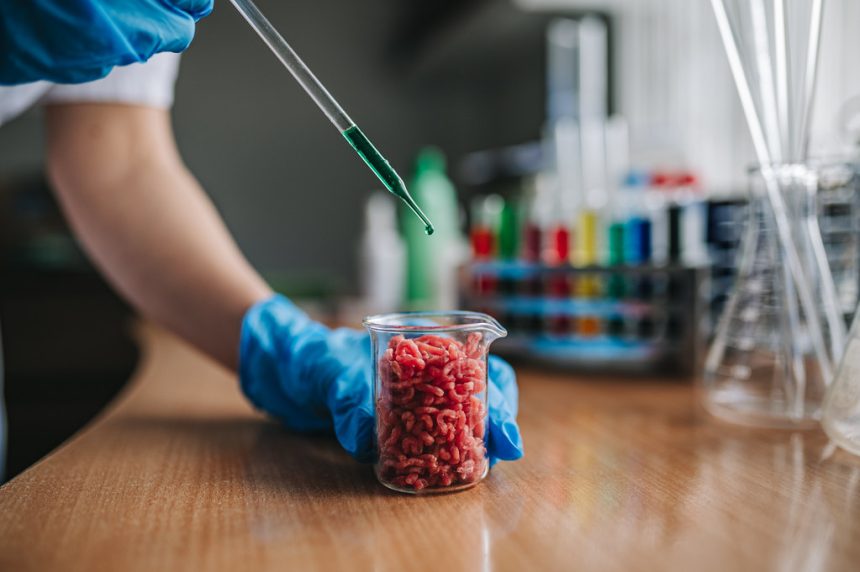As the global population surges toward 10 billion and climate change threatens traditional agriculture, the way we produce and consume food is undergoing a radical transformation. From petri-dish steaks to spirulina smoothies, lab-grown meat and algae are no longer fringe concepts—they’re increasingly being seen as key solutions to feed the future.
But are we ready to embrace a world where burgers are cultivated in steel tanks and green goo is a breakfast staple?
Why the Food System Needs Reinvention
The modern food industry is facing serious challenges:
- Environmental impact: Livestock farming accounts for nearly 15% of global greenhouse gas emissions.
- Water and land use: Traditional animal agriculture is resource-intensive, contributing to deforestation and water shortages.
- Food insecurity: With supply chains vulnerable to pandemics, war, and weather events, the need for resilient alternatives is urgent.
To address these issues, scientists and startups are reimagining how food can be produced—with sustainability, nutrition, and scalability in mind.
What Is Lab-Grown Meat?
Also known as cultivated or cell-based meat, lab-grown meat is made by harvesting animal cells and growing them in bioreactors with nutrients, simulating the natural growth of muscle tissue—without raising or slaughtering animals.
Key Benefits:
- Lower emissions than conventional meat production.
- No antibiotics or hormones.
- Slaughter-free, appealing to ethical consumers.
Companies like Upside Foods, GOOD Meat, and Aleph Farms have already debuted lab-grown chicken and beef in select markets, with more approvals expected globally.
Algae: The Unsung Superfood
Algae, particularly microalgae like spirulina and chlorella, are gaining traction as nutrient-dense, highly sustainable food sources. They grow rapidly, require minimal land, and can be cultivated in controlled environments, including urban vertical farms.
Algae’s Advantages:
- High protein content (up to 60–70% by weight).
- Rich in omega-3s, iron, B vitamins, and antioxidants.
- Carbon-negative potential, as they absorb CO₂ during growth.
Algae is already appearing in protein powders, snacks, pasta, and even ice cream. As tech improves, expect it to move from “health food” niche to everyday staple.
How Close Are We to Mass Adoption?
While lab-grown meat and algae-based products are technically viable, a few hurdles remain:
- Cost: Lab-grown meat is still expensive, though prices are dropping as scale increases.
- Regulation: Governments are cautiously approving these products. The U.S. and Singapore have led the way.
- Public perception: Some consumers are wary of “unnatural” or “Frankenfoods,” despite the safety and environmental benefits.
That said, younger generations—particularly Gen Z—are more open to food innovation, driven by climate concerns and curiosity.
Other Contenders in the Future Food Race
- Insects: High in protein, low in resource use.
- Precision fermentation: Using microbes to produce egg whites, dairy proteins, and fats.
- 3D-printed foods: Customizable nutrition and textures.
- Vertical farming: Hyper-local, pesticide-free produce grown in cities.
Together, these trends point to a more diverse, tech-driven food ecosystem.
The Cultural Shift Ahead
Food is deeply personal—tied to culture, memory, and identity. The transition to lab-grown and alternative foods won’t just be about science; it’ll require storytelling, design, and culinary creativity.
Chefs, influencers, and food brands will play a critical role in normalizing these new ingredients, whether through plant-based sushi rolls with algae rice or lab-grown wagyu burgers plated like fine art.
Conclusion: From Sci-Fi to Supper Table
We’re standing at the edge of a food revolution. While lab-grown meat and algae may sound futuristic, they offer real solutions to urgent problems—and their mainstream moment may arrive sooner than you think.
So the next time you bite into a burger, don’t be surprised if it didn’t come from a farm, but a lab. And if your smoothie glows a little green? That might just be the taste of the future.











